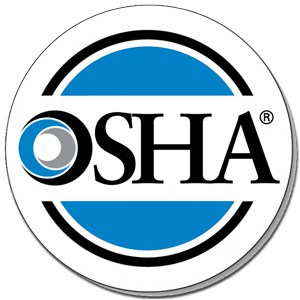As an employer, one of your most important responsibilities is to provide a safe, injury-free environment for your workers. Your job is not done simply after rolling out a safety program and spearheading training sessions.
Each year, OSHA releases new rules and modifies its safety standards. As a result, it is crucial for businesses and construction companies to stay up-to-date with these changes. This not only will ensure a healthy workforce, but also will protect your business from potential lawsuits and other legal implications.
This year, OSHA’s new regulations will affect 6.9 million establishments, where 112 million workers are being employed. They not only will apply to construction businesses but to general industry operations as well.
Here are some recent prominent changes in OSHA’s fall protection regulations you should know.
Walking-Working Surfaces and Fall Protection Systems:
Under the new rule, employers have more flexibility when selecting fall protection systems that are most suitable for their workers.
Previously, OSHA stated no safe distance when it came to working on an unprotected roof edge. However, under the new rule, if the distance is less than 6 feet from the roof edge, conventional fall protection systems are required. This includes guardrail systems, personal fall arrest systems, and safety nets.
Stairways, Ladders, and Guardrails:
Did you know that falls from ladders account for 20 percent of all general industry workplace injuries and fatalities?
The new general industry regulations for guardrails, ladders, and stairways now are aligned with those in the construction industry. Employers must provide guardrails for all work at a height of 42 inches (+/– 3 inches) or higher.
The new rule puts an emphasis on workplace assessments. All employers must conduct fall hazard assessments before workers can perform their jobs. Each piece of equipment must be identified, tested, certified and maintained properly.
Employers also need to ensure their employees know how to assess and determine whether walking-working surfaces will support the loads that will be placed on them.
For rope descent systems that use anchorages, inspection is mandatory. This will help make sure each anchorage attached to a worker is capable of supporting at least 5,000 pounds in any direction. This rule will go into effect by November 20, 2017.
Every single employee who uses personal fall protection and performs high-hazard work must be trained about the dangers of falls and how to properly use fall protection systems. The deadline for implementing this rule was May 17.
Historically, employee training always has required guidance from a qualified individual. That said, the new rule specifically states what roles a “competent person” must be able to verify in an array of situations, including:
- When the structural integrity of a walking-working surface needs repair or correction work.
- Annual inspections of rope descent systems.
- Inspections of knots in a lanyard or vertical lifelines.
- Anchorage certifications.
In addition, if there are any changes in workplace operations or equipment, or if an employer believes that additional training would be beneficial, employee re-training is essential. You also must ensure the provided training is written in a language and with vocabulary terms your workers will understand.
Alignment between the General and Construction Industries:
The new walking-working surface regulation provides more consistency between general industry standards and construction industry standards. These consist of the following:
- The ability to choose the fall protection systems that work best for your employees.
- The criteria and practice requirements for guardrail systems.
- Requirements for scaffolds.
- Fall protection plans for unprotected sides and edges when performing roof work.
- Requirements for safety net systems.
- Requirements for rope descent systems.
While OSHA has made some extensive updates to its guidelines for fall protection, these changes were created with a safety mindset and are intended to help lower fatality and injury rates in workplaces across the nation.
IMEC Technologies provides Safety Management Software to increase worker safety and aid compliance. IMEC’s Safety Management Software will manage inspections and audits, provides hazard identification, incident reporting, management of corrective and preventative actions from generation to closure. IMEC provides lock out tag out software solutions that will allow users to create lockout tagout procedures using an intuitive Mobile App and Manage Lockout Tagout Procedures, also the Review and Execution of those Lockout Tagout Procedures using the Mobile App. Annual Lockout Tagout Procedures audits are conducted using a Mobile App. The Mobile Inspection App allow users to perform inspections and audits, for example the system can be used as a Fire Extinguisher Barcode Inspection Software system to manage monthly fire extinguisher inspections and general fire safety inspections and also to record safety observations and manage corrective actions, anywhere and anytime. The solution can be used as a fire extinguisher barcode inspection software system or life safety inspection system to aid compliance in Higher Education, Healthcare, Industrial and Commercial Organizations. Benefits from a Fire Extinguisher Barcode System include the elimination of paperwork and reducing the burden of compliance with regulations such as NFPA, The Joint Commission. The Incident Reporting App allows users to easily and quickly report incidents, hazards and near-misses, these are then sent to the appropriate people for action and are managed to closure. Web Apps provide features such as, setup, management, scheduling tools, analysis, reporting and dashboards etc with the ability to report incidents to government bodies such as OSHA and RIDDOR. HazMat T&T is a hazardous waste management software solution designed for Environmental Service Companies and companies who generate a large quantity of hazardous waste. The solution tracks hazardous waste from cradle to grave aiding compliance, providing accurate waste inventory, increasing waste handling efficiency, reducing risk and also helps manage waste costs. HazMat T&T Hazardous Waste Management Software can be deployed in a number of deployment scenarios, from Large Hazardous Waste Generators, tracking their hazardous waste at their site to Environmental Service and Waste Management Companies using it track and manage hazardous waste at transfer and disposal sites. For more information visit our website www.imectechnologies.com

